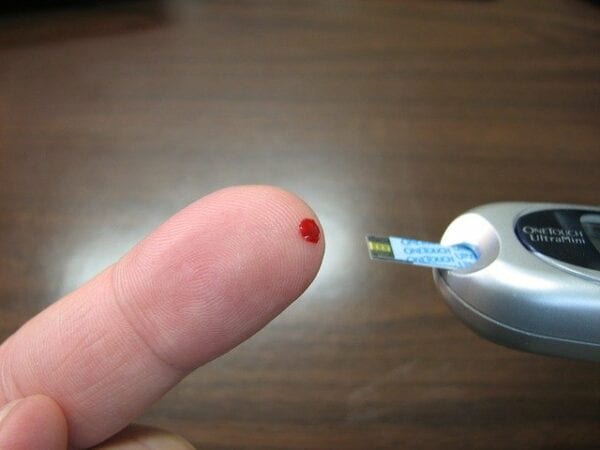I was asked about the clinical of thiazides and hyperglycemia. To be honest, studies aren’t that great surrounding this question, and the main ones I’m aware of and could find were very old. Here’s a quick breakdown of a couple of studies on the risk of thiazides contributing to hyperglycemia.
The original study that was done that I am aware of is from 1977…yes, over 40 years old. Needless to say, we do things a little differently nowadays. Here’s the abstract;
“A 20% or greater rise in the fasting blood sugar occurred in 11 of 24 patients treated with 50 mg hydrochlorothiazide twice daily for six to ten weeks. The blood sugar decreased when potassium was given in conjunction with the diuretic, but the mean fasting blood sugar remained higher than pretreatment levels.”
How many times in clinical practice have I seen 50 mg twice daily? Not many. To be honest, I can’t remember it if I have ever seen it.
The other article I found on the topic of thiazides and hyperglycemia is much newer, but still very old in the grand scheme of things. This one was from 1997. Here’s a segment of the abstract that discusses hyperglycemia risk.
“Fasting plasma glucose and hemoglobin A1 increased significantly (p < 0.05) only in group A (combination of hydrochlorothiazide 33 mg/day and sotalol) after 1 year of treatment (from 91.6 to 98.0 mg/dl, and from 6.3 to 6.9%, respectively). Our data show that the diuretic/beta-blocker combination has adverse effects on lipid and glucose metabolism after long-term therapy. The effects of the diuretic/ACE inhibitor combination on lipid metabolism are less pronounced and there are no adverse effects on glucose metabolism. However, the ACE inhibitor component could not completely counteract the metabolic effects of the diuretic.”
In this article, hydrochlorothiazide was used in combination with an ACE inhibitor in one group and sotalol in the other group. The sotalol/HCTZ group had a significant increase in blood sugar. The ACE/HCTZ group did not. This is another situation where we can pick gigantic holes in this data. For one, when is sotalol or captopril ever used in hypertension? Virtually never.
Bottom Line – Thiazides and Hyperglycemia
I typically don’t worry too much about the risk of thiazides and hyperglycemia, and this is especially true in patients taking low dosages of thiazides. If you have a patient taking higher dosages as the first article had, I may get a little more concerned about it. With that said, if I have a patient who reports elevated blood sugars and doesn’t have a reason as to why they have gone up, I do include thiazides in my medication-related differential.



I agree with the comments you made about glucose and thiazides but would add these comments. Thiazide diuretics were introduced into clinical practice in the late 1950s and by the early 1960s reports of increased glucose were published. Studies with glucose tolerance tests showed thiazides were associated with abnormal glucose tolerance. 1 Others noted an association with treating patients with potassium chloride reduced the hyperglycemic effect. 2
Doses of hydrochlorothiazide are lower today than when they were first used. When I started practicing, the starting dose of HCTZ was 50 mg daily and many were treated with 100 mg daily. Lower doses became the norm years later. However, data have shown a dose-response relationship up to 200 mg daily of HCTZ. In one VA Cooperative Studies trial comparing propranolol to hydrochlorothiazide, the thiazide dose was started at 50 mg daily and increased at four-week intervals to 100 mg and then 200 mg daily. The largest response rate was at 50 mg and there was a difference between two and four weeks in lowering the BP at each dose. Overall, about 50% of the patients responded to 50 mg, 80% to 100 mg, and 100% to 200 mg daily among those patients attaining a DBP of <90 mm Hg. The response rate was higher in Blacks than Whites. 3 Why this is important can be related to the much greater prevalence of obesity in America. A comparison of lisinopril and hydrochlorothiazide in only obese patients (mean weight 97 kg with men having mean 103 kg and women 90 kg) noted a dose-response in those responding to the drugs. The HCTZ dose was 12.5 mg, 25 mg, and 50 mg daily and for those who attained DBP 25 mg daily, the BP is controlled, and there is no hyperglycemia nor hypokalemia, maybe the dose is correct. I would not be adherent to recommendations for low doses in selected patients.
1. Shapiro AP, Bendek TG, Small JL. Effect of Thiazide on Carbohydrate Metabolism, on Patients with Hypertension. NEJM 1961; 265: 1029.
2. Rapoport MI, Hurd HF. Thiazide-Induced Glucose Intolerance Treated with Potassium. Arch Intern Med 1964; 265: 405.
3. Veterans Administration Cooperative Study Group on Antihypertensive Agents. Comparison of Propranolol and Hydrochlorothiazide for the Initial Treatment of Hypertension. I. Results of the Short-Term Titration with Emphasis on racial Differences in Response. JAMA 1982; 248: 1996.
4. Reisin E, Weir MR, Falkner B, et al. for the Treatment in Obese Patients with Hypertension, (TROPHY) Study Group. Hypertension 1997; 30: 140.
Thanks for the comment Bill! – Eric